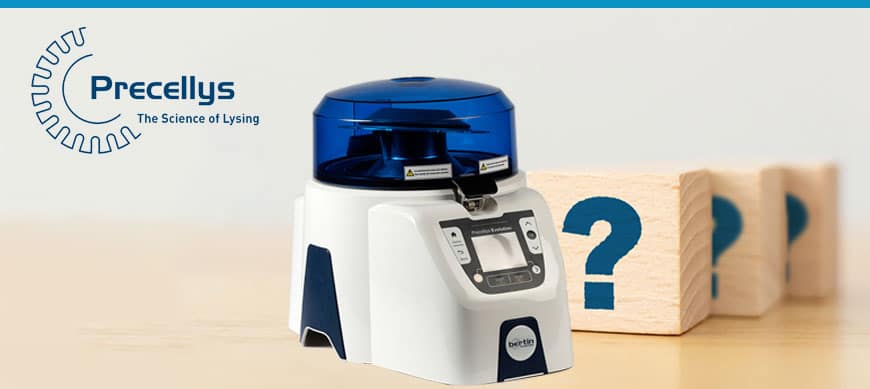Should I add some liquid to the tube in order to homogenize my samples?
It is not strictly necessary. It depends on the application and the type of sample. In most cases, yes, it will facilitate the homogenization of your samples. For DNA and RNA extraction, we definitely recommend the use of a lysis buffer (the one that comes with your DNA/ARN extraction kit). The use of lysing buffer would greatly increase the yield of DNA and/or RNA in your extraction. Do take note, however, that most lysing buffers are very foamy substances, so follow the recommendations of the extraction protocol that you are using, or just add enough liquid to cover up the sample in order to avoid cross-contamination once you open the tubes. Also, we highly recommend that you centrifuge the samples for a few seconds right after homogenization. That will help settle the larger particles that might clog the pipette tips, and reduce the amount of foam.
Is it possible to freeze the Precellys tubes at -80°C?
Deep freeze of any material makes it more likely to break if submitted to shocks, this is the case of the Precellys tubes. Despite their high resistance, they will get more fragile if submitted to strong energy shocks delivered by the beads on the instrument right after a -80°C step. Nevertheless, they remain compatible for a short-term storage at-80°C (up to 8-10 days) AFTER homogenization.
What is the material of the Precellys tubes?
The tube material is polypropylene. Thanks to its very valuable physical properties, the polypropylene (PP) is used in multi-domain industrial use and ensure the best efficiency during your homogenization process.
Learn more about our Precellys range on Bertin Instruments >>
Any other questions ? Contact us!>>

